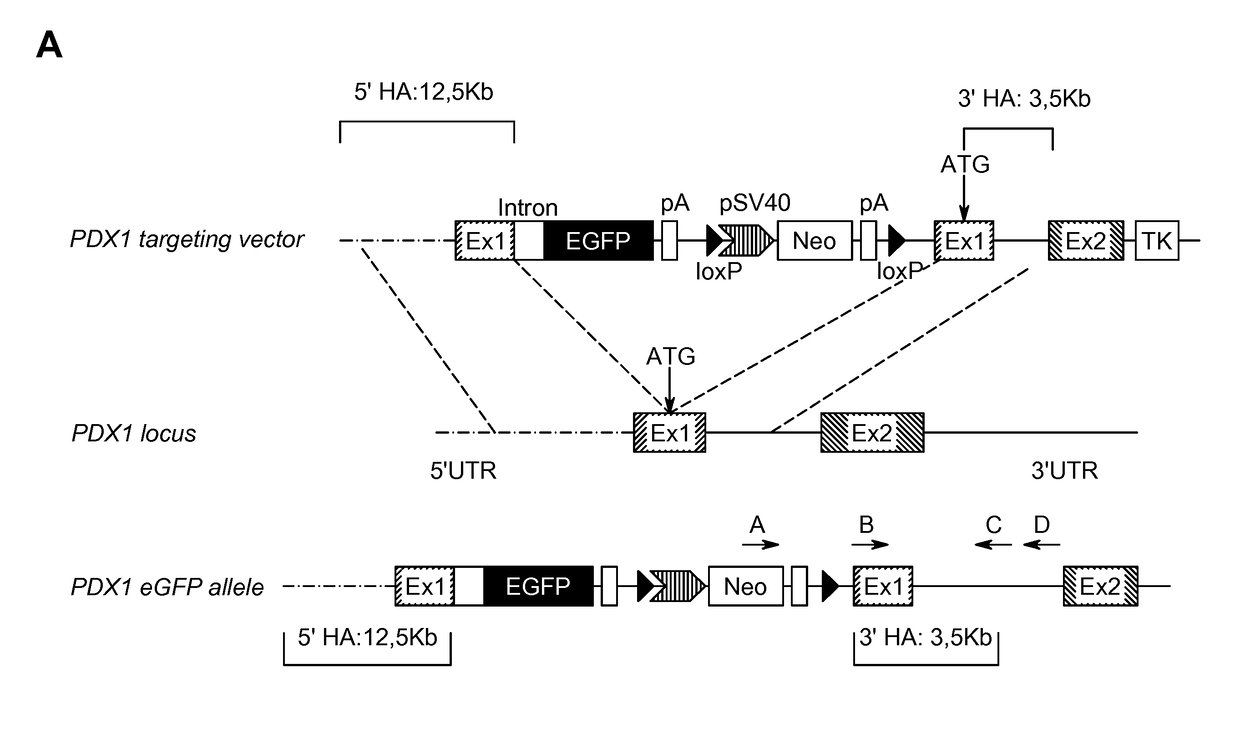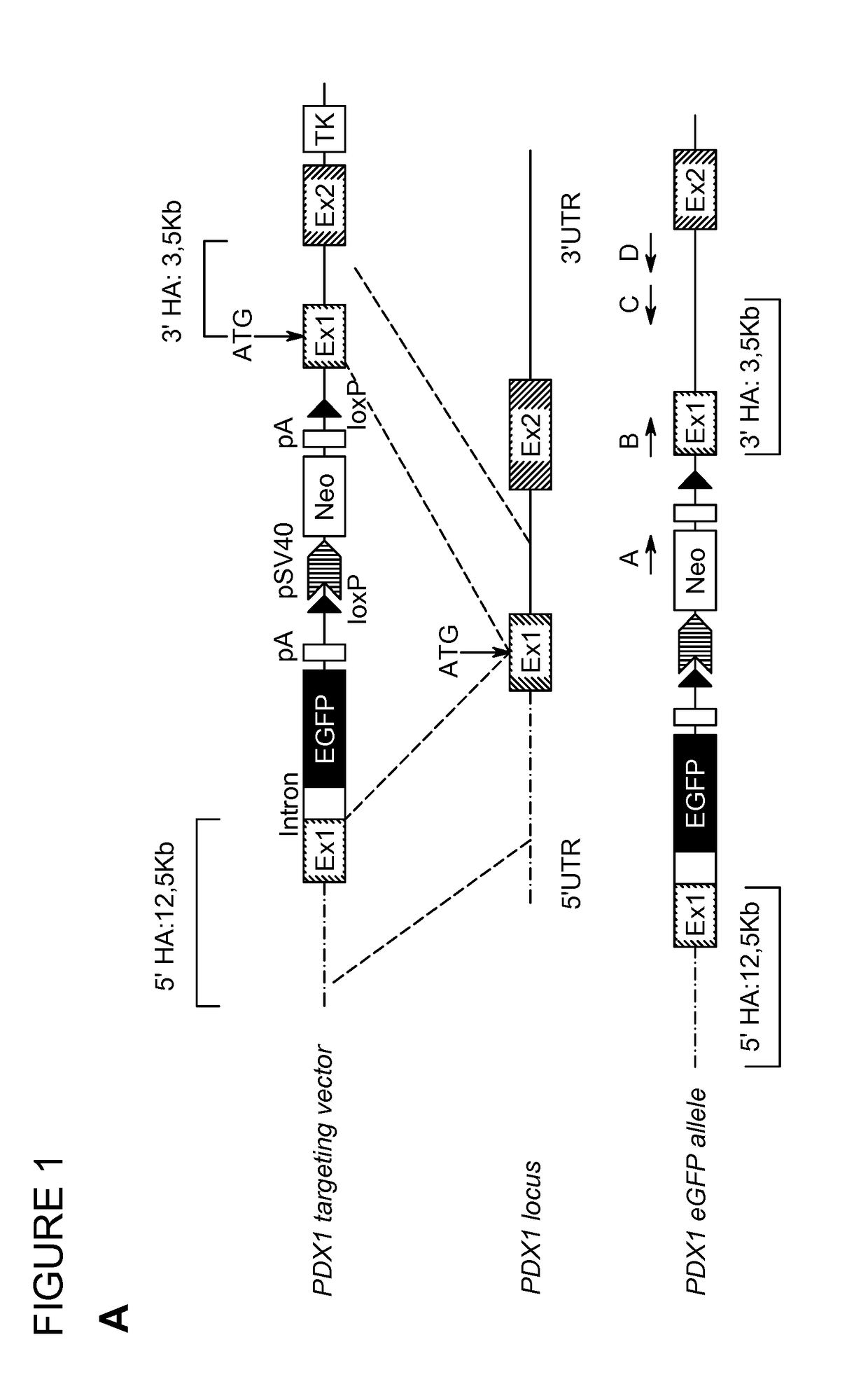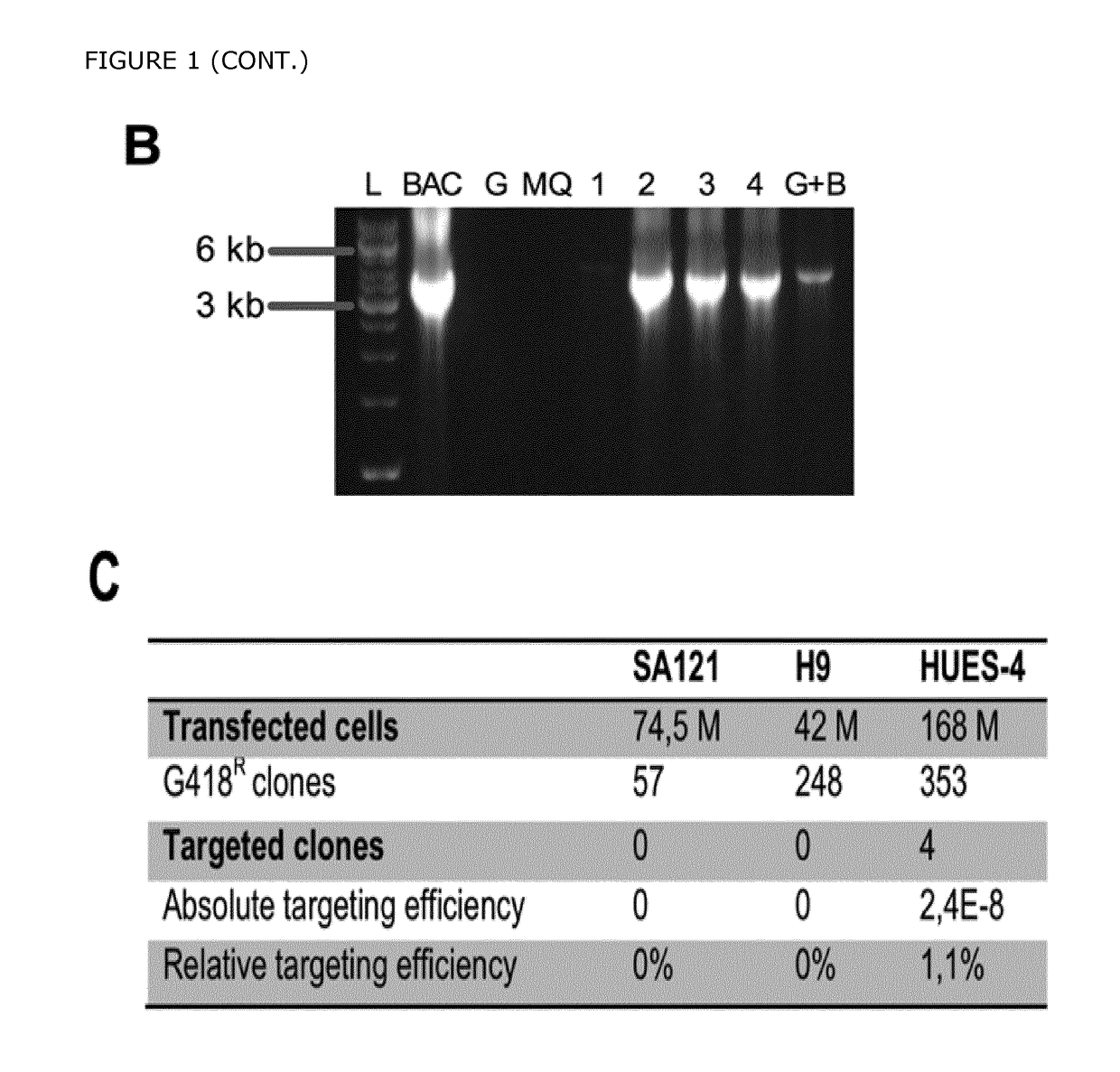Isolation of bona fide pancreatic progenitor cells
a pancreatic progenitor cell and bona fide technology, applied in the field of isolating bona fide pancreatic progenitor cells, can solve the problems of limited cell therapy treatment for diabetes mellitus, such as type 1 or type 2 diabetes, which utilizes cells from donor pancreases, and achieves the effect of promoting cell transition, increasing proliferating gp2+ ppcs, and reducing the number of g0/g1
- Summary
- Abstract
- Description
- Claims
- Application Information
AI Technical Summary
Benefits of technology
Problems solved by technology
Method used
Image
Examples
example 1
Introduction
[0261]Curing diabetes would require the prevention of autoimmune destruction of beta cells together with the restoration of the beta cell mass already destroyed. The treatment would either be regeneration or transplantation of the insulin producing cells. Due to their inherent pluripotency and theoretically unlimited supply, human embryonic stem cells (hESCs) have become an attractive source for beta cell replacement therapies.
[0262]This strategy relies on overcoming the risk of teratoma formation after transplantation. Engraftment of purified hESC derivatives could minimize the risk of tumorigenicity. In this study, we performed an in depth analysis of hESC-derived PDX1+ pancreatic progenitors by developing a targeted PDX1-eGFP reporter cell line. We identified novel cell surface markers for the isolation of hESC-derived PDX1+ beta cell progenitors. Specifically, we show enrichment of GP2 and FOLR1 in the GFP+ fraction corresponding to pancreatic progenitors and CD49d i...
example 2
of eGFP into the Human PDX1 Locus
[0266]To monitor pancreatic endoderm formation in hESCs, the transcription factor Pancreatic duodenal homeobox 1 (PDX1), essential for pancreas development and beta cell function, was targeted by using bacterial artificial chromosome (BAC) recombineering (FIG. 1A). A BAC containing the human PDX1 gene was identified using the genome browser at http: / / genome.ucsc.edu. An eGFP-loxp-Sv40-Neo-loxp reporter cassette was inserted directly upstream of the PDX1 start codon. The targeting vector was retrieved into a bacterial plasmid and the neomycin cassette was excised by CRE recombinase to produce the final targeting vector containing homology arms of 12.5 kb and 3.5 kb. Notably, the excision of the Neo cassette was crucial to obtain eGFP expression. The HUES-4 cell line was electroporated with the linearized targeting vector and treated with G418 for two weeks until drug resistant colonies appeared. Screening of 353 clones resulted in 4 correctly targeted...
example 3
of In Vitro Differentiated PDX1-eGFP hESCs
[0267]By modifying our previously published differentiation protocol (Ameri et al., 2010) and combining it with the PDX1-eGFP reporter cell line described in example 2, we were able to FACS sort different subpopulations either co-expressing PDX1 and NKX6-1 (protocol A (PE)) or only expressing PDX1 while lacking NKX6-1 (protocol B (PFG)) (FIGS. 2A, 2B and 2D). To assess gene expression profiles of the FACS sorted eGFP+ and eGFP− cell populations mRNA levels of various pancreas-associated genes were quantified by qPCR (FIGS. 2C and 2F). Expression of PDX1, NKX6-1, ECAD, MNX1, HNF6, and SOX9 were all significantly up-regulated in the eGFP+ cells versus the eGFP− cells obtained with protocol A (PE) (FIG. 2D). However, neither MNX1 nor more importantly NKX6-1 were significantly up-regulated in the eGFP+ cells obtained with protocol B (PFG) (FIG. 2G). These results suggest that the eGFP+ cells obtained with protocol A (PE) are pancreatic progenito...
PUM
| Property | Measurement | Unit |
|---|---|---|
| excitation emit wavelengths | aaaaa | aaaaa |
| diameter | aaaaa | aaaaa |
| cell surface | aaaaa | aaaaa |
Abstract
Description
Claims
Application Information
 Login to View More
Login to View More - R&D
- Intellectual Property
- Life Sciences
- Materials
- Tech Scout
- Unparalleled Data Quality
- Higher Quality Content
- 60% Fewer Hallucinations
Browse by: Latest US Patents, China's latest patents, Technical Efficacy Thesaurus, Application Domain, Technology Topic, Popular Technical Reports.
© 2025 PatSnap. All rights reserved.Legal|Privacy policy|Modern Slavery Act Transparency Statement|Sitemap|About US| Contact US: help@patsnap.com



